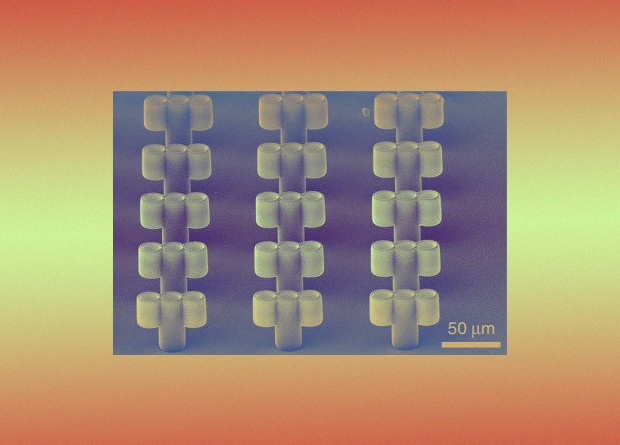Hong Kong bioengineers create rocket that travels through blood vessels
 Scientists dream of biorobots that deliver medicine to diseased organs.
Scientists dream of biorobots that deliver medicine to diseased organs.At the City University of Hong Kong, bioengineers printed a three-nozzle micro-rocket. The new microrobot turned out to record fast: it overcomes 2.8 millimeters per second. Armed with a photoacoustic microscope, scientists tracked how a micro-rocket travels through a rubber vessel with blood, and then through the tissue of a mouse ear. A breakthrough in science was reported in Light: Science & Applications.
Scientists create microrobots that will quickly deliver the medicine to a sore spot or diagnose inside the affected organ. That is, a medicine that badly affects the kidneys, but treats the lungs, can be sent immediately to the lungs, and the kidneys can be bypassed. Microrobots are already used for drug delivery and treatment of tumors in the stomach, intestines and subcutaneous tissue. However, they want to improve robots, including faster.
It is difficult for microrobots to move in the blood, because it is viscous and fleeting. It’s like sailing a sailboat upstream. Relatively fast, only microrobots with chemical movement technology travel through the blood. However, they are charged with chemicals that are toxic to the blood. They can be used in artificial conditions, but in humans it is dangerous. But magnetic microrobots are considered safe. They are much easier to control, but they move so slowly that they cannot cope in the blood stream. They are ahead of the microrobots, which move at the expense of light. The shape of these devices is asymmetric, therefore, when a microrobot is irradiated with light, it heats up differently from different sides. The effect of thermophoresis appears, that is, the body moves from the hot zone to where it is cooler.
To monitor the microrobot, they invented a method of photoacoustic tomography. Li Dai Wang and his colleagues from the City University of Hong Kong printed a three-nozzle micro-rocket to increase light-based movement efficiency. Microrobots were sent to model rubber vessels with glycerin and bovine blood, as well as to the ear of the mouse, which was anesthetized. It turned out that the rocket is able to accelerate to 2.8 millimeters per second and rotate at a speed of 138 degrees per second.
The rocket was coated with gold, and laser radiation with a wavelength of 532 nanometers showed where exactly the micro-rocket is in the vessel. Getting on a micro-rocket, the radiation caused acoustic signals, which, in contact with gold, changed significantly. That is, there was a sharp contrast between the signals that concern the micro-rockets and the vessel itself.
Under laser radiation of 808 nanometers, gold generated heat. There are more gold microracks at the base, so the base warmed up more strongly, which caused thermophoresis. In a 50 percent solution of glycerol under the radiation of an 808-nanometer laser, a micro-rocket overcame 777.4 micrometers in a second. A 50 percent viscosity glycerol solution (4.21 micropascals per second) is close to the viscosity of human blood (3-4 micropascals per second). With an increase in laser power from 1 watt to 1.5 watts, the average speed of the microrobot became greater: 2.8 millimeters per second and in a second the distance was 62 times longer than the microproject itself.
Scientists were afraid that the tissue of the vessel in a living organism would weaken the laser radiation, so they sent micro-rockets to the tissue of the mouse ear. The contrast was even greater, that is, it became easier to find a micro-rocket.
Source: kp.ua










